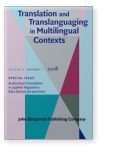Why is that creature grunting?
The use of SDH subtitles in video games from an accessibility
perspective
Video games today are highly complex audiovisual products. Their nature is not
only multisemiotic but also interactive. Their potential audience has certain
expectations and, especially in the case of digital blockbusters, final users
need the advantage of knowledge and the force of numbers. A faux
pas in design, continuity or playability will most likely be
conducive to social media outrage, and will see official apologies be released
presently. Conversely, accessibility shortcomings rarely or never have the same
impact.
The present study puts forward the advantages of including Subtitles for the Deaf and Hard of Hearing (SDH) in
popular video games and offers an in-depth analysis of a selection of recent
multimedia titles. Drawing on the work of
Bernal Merino (2015),
O’Hagan
and Mangiron (2013) and
Trabattoni (2014) on the special characteristics of video games, the
main elements around which they are structured and the aspects that determine
their success or failure, the author will endeavour to advance a convincing
argument in favour of the introduction of SDH subtitling conventions.
Article outline
- 1.The medium
- 2.The language
- 2.1Translation vs Localisation
- 2.2Localisation vs Transcreation
- 2.3Video game content presentation
- 3.The accessibility modality
- 4.The corpus
- 4.1First case study
- 4.2Second case study
- 4.3Third case study
- 4.4Fourth case study
- 4.5Fifth case study
- 4.6Sixth case study
- 4.7Seventh case study
- 4.8Eighth case study
- 4.9Ninth case study
- 5.The norm
- 5.1Tier 1: General level
- 5.2Tier 2: Relationship between sound and text
- 5.3Tier 3: Textual level
- 5.4Overall assessment
- 6.The potential applications
- 6.1A note on SDH and language learning
- Supplementary audiovisual presentation
- Acknowledgements
- Notes
-
References
-
Video game corpus
